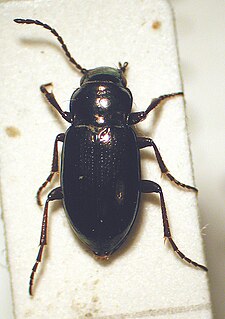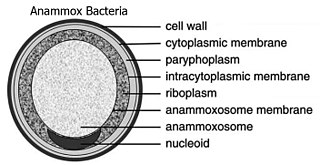| Pseudolais | |
|---|---|
| Scientific classification | |
| Kingdom: | Animalia |
| Phylum: | Chordata |
| Class: | Actinopterygii |
| Order: | Siluriformes |
| Family: | Pangasiidae |
| Genus: | Pseudolais Vaillant, 1902 |
| Synonyms | |
| |
Pseudolais is a genus of shark catfishes native to Southeast Asia.
| Pseudolais | |
|---|---|
| Scientific classification | |
| Kingdom: | Animalia |
| Phylum: | Chordata |
| Class: | Actinopterygii |
| Order: | Siluriformes |
| Family: | Pangasiidae |
| Genus: | Pseudolais Vaillant, 1902 |
| Synonyms | |
| |
Pseudolais is a genus of shark catfishes native to Southeast Asia.
There are currently two recognized species in this genus: [1]

Chipmunks are small, striped rodents of the family Sciuridae. Chipmunks are found in North America, with the exception of the Siberian chipmunk which is found primarily in Asia.

A weasel is a mammal of the genus Mustela of the family Mustelidae. The genus Mustela includes the least weasels, polecats, stoats, ferrets and mink. Members of this genus are small, active predators, with long and slender bodies and short legs. The family Mustelidae is often referred to as the "weasel family". In the UK, the term "weasel" usually refers to the smallest species, the least weasel (M. nivalis).
A genus is a taxonomic rank used in the biological classification of living and fossil organisms, as well as viruses, in biology. In the hierarchy of biological classification, genus comes above species and below family. In binomial nomenclature, the genus name forms the first part of the binomial species name for each species within the genus.

Binomial nomenclature, also called binominal nomenclature or binary nomenclature, is a formal system of naming species of living things by giving each a name composed of two parts, both of which use Latin grammatical forms, although they can be based on words from other languages. Such a name is called a binomial name, a binomen, binominal name or a scientific name; more informally it is also called a Latin name.

A booby is a seabird in the genus Sula, part of the family Sulidae. Boobies are closely related to the gannets (Morus), which were formerly included in Sula.

The Geoemydidae are one of the largest and most diverse families in the order Testudines (turtles), with about 70 species. The family includes the Eurasian pond and river turtles and Neotropical wood turtles.

The Lacertidae are the family of the wall lizards, true lizards, or sometimes simply lacertas, which are native to Europe, Africa, and Asia. The group includes the genus Lacerta, which contains some of the most commonly seen lizard species in Europe. It is a diverse family with at least 300 species in 39 genera.

In biology, a monotypic taxon is a taxonomic group (taxon) that contains only one immediately subordinate taxon.

The phylum Bacteroidetes is composed of three large classes of Gram-negative, nonsporeforming, anaerobic or aerobic, and rod-shaped bacteria that are widely distributed in the environment, including in soil, sediments, and sea water, as well as in the guts and on the skin of animals.

In zoological nomenclature, a type species is the species name with which the name of a genus or subgenus is considered to be permanently taxonomically associated, i.e., the species that contains the biological type specimen(s). A similar concept is used for suprageneric groups and called a type genus.
Verrucomicrobia is a phylum of bacteria. This phylum contains only a few described species. The species identified have been isolated from fresh water, marine and soil environments and human faeces. A number of as-yet uncultivated species have been identified in association with eukaryotic hosts including extrusive explosive ectosymbionts of protists and endosymbionts of nematodes residing in their gametes. While verrucae is another name for the warts often found on hands and feet, this phylum is so called not because it is a causative agent thereof, but because of its wart-like morphology.

The Trachypachidae are a family of beetles that generally resemble small ground beetles, but that are distinguished by the large coxae of their rearmost legs. There are only six known extant species in the family, with four species of Trachypachus found in northern Eurasia and northern North America, and two species of Systolosoma in Chile. They were much more diverse in the past, with many members belonging to the extinct subfamily Eodromeinae, the first fossils known of this family are of the genera Petrodromeus and Permunda from the Permian-Triassic boundary of Russia.

Planctomycetes are a phylum of aquatic bacteria and are found in samples of brackish, and marine and fresh water. They reproduce by budding. In structure, the organisms of this group are ovoid and have a holdfast, at the tip of a thin cylindrical extension from the cell body called the stalk, at the nonreproductive end that helps them to attach to each other during budding.

Struthio is a genus of bird in the order Struthioniformes, whose members are the ostriches. There are two living species, the common ostrich and the Somali ostrich.

Grosbeak is a form taxon containing various species of seed-eating passerine birds with large beaks. Although they all belong to the superfamily Passeroidea, these birds are not part of a natural group but rather a polyphyletic assemblage of distantly related songbirds. Some are cardueline finches in the family Fringillidae, while others are cardinals in the family Cardinalidae; one is a member of the weaver family Ploceidae. The word "grosbeak", first applied in the late 1670s, is a partial translation of the French grosbec, where gros means "large" and bec means "beak".

Tube-dwelling anemones or ceriantharians look very similar to sea anemones but belong to an entirely different subclass of anthozoans. They are solitary, living buried in soft sediments. Tube anemones live inside and can withdraw into tubes, which are composed of a fibrous material made from secreted mucus and threads of nematocyst-like organelles known as ptychocysts. Ceriantharians were formerly classified in the taxon Ceriantipatharia along with the black corals but have since been moved to their own subclass, Ceriantharia.
In zoological nomenclature, the specific name is the second part within the scientific name of a species. The first part of the name of a species is the name of the genus or the generic name. The rules and regulations governing the giving of a new species name are explained in the article species description.

Pangasius is a genus of medium-large to very large shark catfishes native to fresh water in South and Southeast Asia. The term "pangasius" is sometimes used to specifically refer to the commercially important basa fish, P. bocourti.

In biological classification, taxonomic rank is the relative level of a group of organisms in a taxonomic hierarchy. Examples of taxonomic ranks are species, genus, family, order, class, phylum, kingdom, domain, etc.
Veloxidium is a genus of parasitic alveolates in the phylum Apicomplexa. Species in this genus infect marine invertebrates.
| This catfish-related article is a stub. You can help Wikipedia by expanding it. |